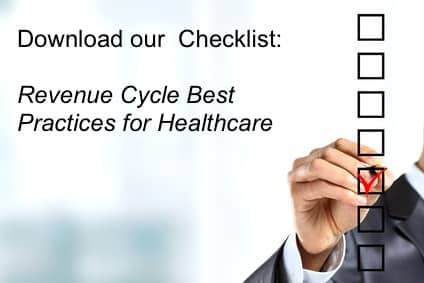With the existing economic hard times, it is very critical that medical practices and facilities keep an eye on their accounts receivable. A continuous flow of claims payment will determine if the practice can support its overhead costs, retain its employees and continue to provide high-quality of care for its patients – and make a profit for the owners. This is where the Revenue Cycle plays a very important role for the financial survival of the practice or facility.
For medical practices and medical facilities, how is the Revenue Cycle completed?
Before we can answer this question, we need to understand when the Revenue Cycle begins.
Most healthcare billing consultants will tell you the minute a patient calls for an appointment or walks into the medical office and services are rendered, the Revenue Cycle begins. The Revenue Cycle ends when the proper payments are received and posted by the billing office. This sounds like a simple process; however, there are many steps and factors that require a coordinated team effort starting from the front desk associate to the physician, the nurses, and finally the medical biller.
The first rule is to gather correct and complete patient and insurance information to ensure proper, prompt billing. Your objective is to file a clean claim that will be paid between 7 to 14 days, not in 45 to 90 days or, in the worst case scenario, one that will end up as a denial.
Revenue Cycle completion will require the following 12 steps:
-
- Front desk associates must be knowledgeable and have excellent patient relations skills.
- Staff should be properly trained regarding various types of insurance coverage and their requirements for claims payment (Medicare, Medicaid, HMO, PPO, POS, EPO, etc.)
- Avoid denials due to ineligibility at the time of services by verifying patient eligibility and benefits by phone or via the web prior to the appointment.
- Watch out for any changes in insurance coverage, making sure that the most current insurance carrier will be billed. Make a copy of the patient’s insurance ID card.
- Educate and train staff on the following: Referral authorization process for HMO patients, Other insurance coverage, Third party liability, and Worker’s Compensation.
Download this Valuable Checklist Now!
- Co-payments should be collected up-front, prior to the patient being seen.
- Advanced Beneficiary Notices should be explained and discussed with the patients if there is a possibility that the services to be rendered will not be covered by Medicare or the insurance carrier.
- Create a super bill that reflects the most common diagnoses and procedures performed in the practice. The physician should be able to mark the appropriate diagnosis and procedure codes. Keep the superbill up to date each year!
- Ensure that the ICD-9CM, CPT, HCPCS codes and appropriate modifiers are billed.
- Perform a pre-billing review to eliminate potential medical billing errors.
- File the claims electronically within one working day of the patient’s visit.
- Bill regularly! If the office bills weekly, then the flow of payments should be received on weekly basis.
When these steps are followed, chances are, the medical practice will survive – or even thrive – in these hard economic times.
Medical group practice billing consultants can help you get a detailed assessment of your Revenue Cycle. To learn more about how you can improve your bottom line watch the short presentation on A Better Medical Office Billing Department Explained.


